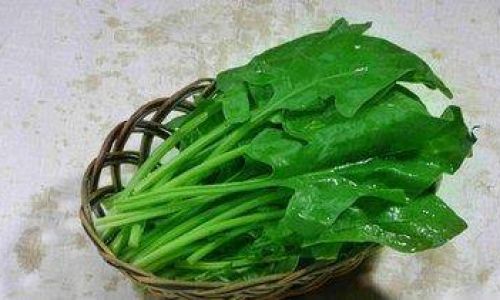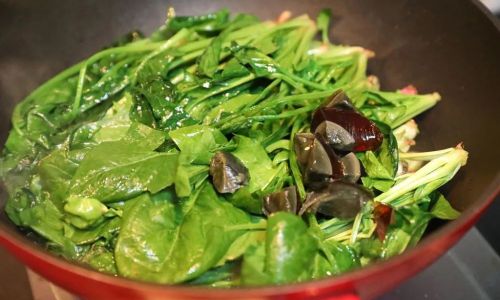Table of content
Spinach, a leafy green powerhouse, has long been celebrated as a nutritional juggernaut. Revered for its versatility, mild flavor, and dense nutrient profile, this vegetable transcends cultural and culinary boundaries. Yet, despite its popularity, many home cooks and health enthusiasts overlook the nuances of preparing spinach to maximize both its taste and health benefits. This article delves into the science and creativity behind spinach consumption, exploring the best practices for selecting, storing, and transforming this humble green into culinary masterpieces. From raw salads to hearty stews, we will uncover the techniques that elevate spinach from a side dish to a star ingredient.
The Nutritional Tapestry of Spinach
Before diving into preparation methods, it is essential to grasp why spinach deserves a permanent spot on your plate. A single cup of raw spinach contains a mere 7 calories yet packs a punch with:
- Vitamin K: Essential for blood clotting and bone health.
- Vitamin A: Critical for vision, immune function, and skin health.
- Folate: A B-vitamin vital for cell repair and DNA synthesis.
- Iron: A mineral crucial for oxygen transport and energy production.
- Magnesium: Supports muscle and nerve function.
- Antioxidants: Such as lutein and zeaxanthin, which protect against chronic diseases.
However, the way spinach is prepared can significantly impact nutrient retention. For instance, raw spinach retains more vitamin C, while cooking can enhance the bioavailability of iron and lutein. Striking the right balance between raw and cooked applications is key to harnessing its full potential.
Raw Brilliance: Salads, Smoothies, and Beyond
Raw spinach offers a crisp texture and a slightly earthy taste, making it an ideal base for salads, wraps, and cold dishes. However, not all spinach varieties are created equal for raw consumption.
Baby Spinach vs. Mature Spinach
- Baby spinach: Tender leaves with a mild flavor, perfect for salads.
- Mature spinach: Thicker leaves with a robust taste, better suited for sautéing or cooking.
When using raw spinach, opt for baby leaves. Wash them thoroughly to remove grit, then pat dry or use a salad spinner to prevent sogginess. Pair with vibrant ingredients to balance its earthiness:

- Sweet additions: Strawberries, oranges, or apples.
- Crunchy elements: Toasted nuts, seeds, or croutons.
- Creamy components: Avocado, goat cheese, or tahini dressing.
Spinach in Smoothies
Blending spinach into smoothies is a seamless way to boost nutrient intake without altering taste. Pair it with:
- Fruits: Banana, mango, or berries for natural sweetness.
- Liquid base: Almond milk, coconut water, or Greek yogurt.
- Protein powder: Vanilla or unflavored varieties for a post-workout drink.
Pro tip: Freeze spinach into ice cubes for ready-to-use portions.
Cooked Perfection: Techniques to Enhance Flavor and Nutrition
While raw spinach has its merits, cooking unlocks deeper flavors and textural contrasts. The key is to avoid overcooking, which can lead to a mushy texture and nutrient loss.
Sautéing: The Quick and Flavorful Method
Sautéing spinach with garlic, olive oil, and a pinch of salt is a timeless preparation. Here’s how to master it:
- Heat a large skillet over medium heat.
- Add olive oil and minced garlic; sauté until fragrant (30 seconds).
- Toss in spinach (wilted volume reduces by 75%, so start with 4 cups raw).
- Stir continuously until leaves are tender (2–3 minutes).
- Season with lemon juice, red pepper flakes, or a sprinkle of Parmesan.
Variations:
- Spicy: Add crushed red pepper or a dash of chili oil.
- Creamy: Stir in a dollop of Greek yogurt or coconut milk.
- Herb-infused: Toss with fresh basil, dill, or mint.
Blanching: Preserving Color and Nutrients
Blanching involves briefly boiling spinach and then plunging it into ice water. This method:
- Retains vibrant green color.
- Reduces oxalic acid (a compound that can inhibit nutrient absorption).
- Softens leaves for use in fillings or dips.
Steps:

- Bring a pot of salted water to a boil.
- Add spinach and cook for 30–60 seconds.
- Transfer to an ice bath to halt cooking.
- Squeeze out excess water and chop or puree as needed.
Creamed Spinach: A Decadent Twist
Traditional creamed spinach relies on heavy cream, but lighter alternatives exist:
- Greek yogurt: Provides tanginess and creaminess.
- Cashew cream: Blend soaked cashews with water for a vegan option.
- Coconut milk: Adds richness with a tropical flair.
Recipe:
- Sauté onions and garlic until translucent.
- Add blanched spinach and stir.
- Fold in ½ cup Greek yogurt, nutmeg, and a pinch of salt.
- Simmer until thickened (5 minutes).
Spinach in Soups and Stews
Spinach adds freshness to hearty soups. Add it during the final minutes of cooking to preserve texture. Pair with:
- Lentil soup: Boosts iron and fiber.
- Minestrone: Complements tomatoes and beans.
- Coconut curry: Wilt spinach into the broth for a silky finish.
Baked Spinach Dishes: Lasagna, Quiches, and Casseroles
Cooked spinach shines in baked dishes. For lasagna, layer it between noodles and béchamel sauce. For quiches, mix with Gruyère and caramelized onions. Always drain excess moisture to prevent sogginess.
Spinach Beyond the Plate: Innovative Uses
- Spinach Pesto: Swap basil for spinach in pesto. Blend with walnuts, Parmesan, and olive oil.
- Spinach Tortillas: Add pureed spinach to dough for green-hued wraps.
- Spinach Chips: Toss leaves with olive oil and bake until crispy (10 minutes at 350°F/175°C).
Storage and Selection: Maximizing Freshness
- Buying: Choose crisp, deep green leaves. Avoid wilted or yellowing batches.
- Washing: Soak in cold water to remove dirt, then dry thoroughly.
- Storing: Refrigerate unwashed spinach in a breathable bag for up to 5 days.
Addressing Concerns: Oxalates and Moderation
Spinach contains oxalates, compounds that can contribute to kidney stones in susceptible individuals. To mitigate this:
- Cook spinach, as heat reduces oxalate levels.
- Pair with calcium-rich foods (e.g., cheese, yogurt) to bind oxalates.
- Consume in moderation if prone to kidney issues.
Cultural Context: Spinach Around the World
- India: Palak paneer features spinach puree with paneer cheese.
- Italy: Straccetti di spinaci are thin spinach ribbons in pasta.
- Middle East: Spinach fatayer are savory pastries filled with spiced spinach.
Conclusion: The Endless Possibilities of Spinach
Spinach is more than a salad staple—it’s a canvas for culinary experimentation. By mastering raw and cooked techniques, you can transform this leafy green into dishes that delight the palate and nourish the body. Whether sautéed with garlic, blended into a pesto, or baked into a quiche, spinach rewards creativity with unparalleled versatility. So, the next time you bring home a bunch of this emerald gem, remember: the best way to eat spinach is the way that excites your taste buds and fuels your health. Let this humble leaf inspire your kitchen adventures—your body and plate will thank you.






0 comments